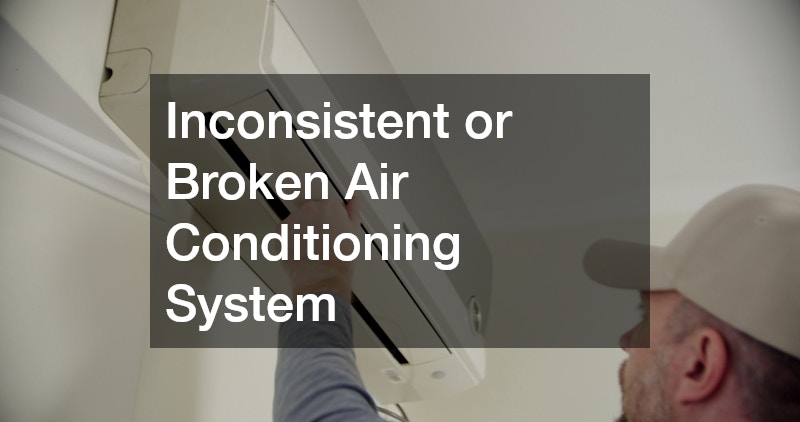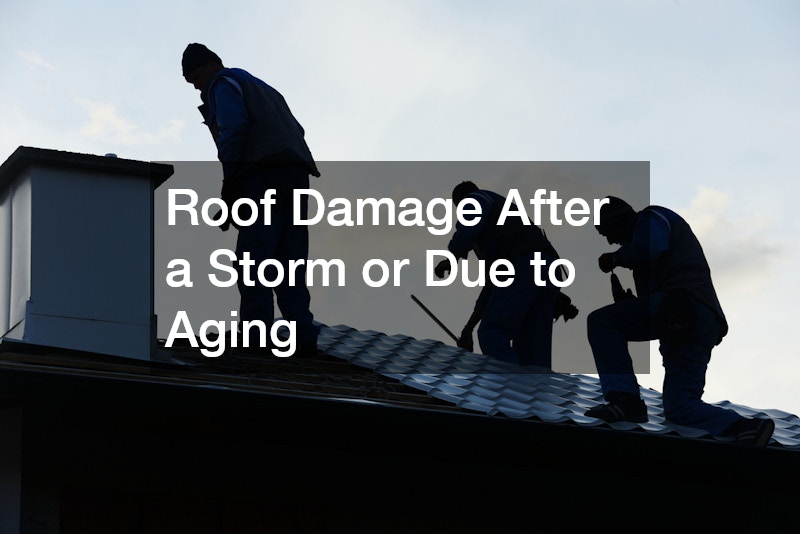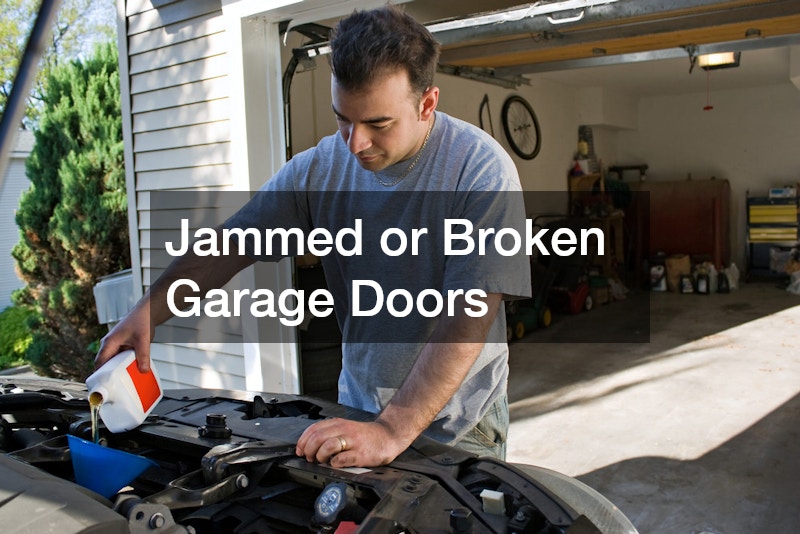Owning a home comes with the satisfaction of having a space to call your own, but it also comes with responsibilities—especially when it comes to upkeep. Unexpected issues can arise at any time, and the cost of ignoring them often escalates quickly. Whether it’s a burst pipe, a failing roof, or a malfunctioning HVAC system, certain repairs should never be delayed. Staying proactive and knowing what to expect can make the difference between a quick fix and a major disaster. This guide will walk you through the top 10 urgent home repairs that every homeowner should be prepared for.
Each section outlines a common but critical issue that, if left unaddressed, could disrupt your day-to-day life or cause significant damage to your property. Understanding these problems and acting quickly can save money and protect your home’s long-term value. Use this list as both a warning and a resource to stay ahead of potential pitfalls in homeownership.
1. Sudden Loss of Water Pressure or Water Supply
One of the most inconvenient problems a homeowner can face is a sudden lack of water from faucets, showers, or irrigation systems. If the issue isn’t rooted in municipal supply problems, the culprit could be your private water system. For homes that rely on wells, this could signal the need for well pump repairs. A failing well pump can leave your household without access to clean water for drinking, cooking, or cleaning.
Well pumps can fail due to mechanical wear, electrical issues, or pressure tank malfunctions. Because these systems operate below ground and are often out of sight, problems tend to go unnoticed until complete failure occurs. A professional inspection can diagnose whether the pump motor is failing or if sediment buildup is clogging the system. Preventative maintenance and annual inspections are vital, especially for older systems. Homeowners should know the location of their well system and keep contact information for a local repair specialist handy.
When dealing with home repairs of this nature, it’s important not to delay. Living without water isn’t just inconvenient—it’s unsafe. Keep in mind that untreated issues in your well system can also affect water quality and the health of your family.
2. Inconsistent or Broken Air Conditioning System

When temperatures soar, a malfunctioning air conditioning system can turn your home into an unbearable environment. Ignoring signs such as inconsistent cooling, loud noises, or an unusually high energy bill can lead to more extensive damage. If your HVAC system isn’t performing well, it may be time to schedule an ac repair service before the issue escalates.
Air conditioning issues can stem from a variety of causes, including refrigerant leaks, dirty filters, damaged coils, or faulty thermostats. Delays in fixing these problems often cause the entire unit to work harder than it should, leading to premature breakdowns and higher electricity bills. In hot climates, poor cooling isn’t just uncomfortable—it can be a health hazard, especially for children, seniors, and pets.
Regular maintenance can help avoid the need for emergency service. During high-use seasons, homeowners should clean or replace air filters monthly and ensure that exterior units remain free of debris. If the system still isn’t working correctly, calling in a licensed HVAC technician can prevent further complications and restore indoor comfort quickly.
3. Leaky or Clogged Pipes and Fixtures
Leaks and clogs can quickly become minor nuisances and cause significant water damage and mold growth. This is where a qualified plumbing professional becomes indispensable. Whether it’s a leaking faucet, a slow-draining sink, or a toilet that won’t stop running, addressing the issue promptly can prevent structural damage and escalating water bills.
Water leaks, even small ones, can damage flooring, drywall, and cabinetry. Clogs in your plumbing system may be due to buildup in pipes, root intrusion from trees, or improperly flushed materials. A plumbing professional can use advanced tools like video inspection equipment to diagnose and resolve the issue efficiently.
Homeowners should avoid the temptation of relying solely on store-bought chemical drain cleaners, as they can corrode pipes over time. Instead, regular maintenance like flushing your drains with baking soda and vinegar or scheduling annual inspections can go a long way. Prompt attention to plumbing issues is a critical part of responsible homeownership and a vital category within essential home repairs.
4. Roof Damage After a Storm or Due to Aging

Your roof is your home’s first line of defense against the elements. When damage occurs, whether from a fallen tree branch or years of wear and tear, prompt attention is necessary. Hiring a trusted roof repair service ensures that leaks, missing shingles, and sagging areas are addressed before they cause interior damage.
Common signs of roof problems include water stains on ceilings, visible leaks, granules in gutters, and lifted shingles. Left unchecked, even a small leak can lead to mold growth, insulation damage, and weakened structural integrity. The faster you act, the more manageable—and affordable—the repairs typically are.
If your roof is more than 15–20 years old, consider having it inspected annually to catch issues early. Preventive roof maintenance, like clearing debris from gutters and trimming overhanging tree branches, can extend the life of your roof. Roof repair is one of the most expensive and complex home repairs, but it is also one of the most vital to long-term property preservation.
5. Cracking or Settling Foundation and Sidewalks
Over time, concrete surfaces around your home—such as driveways, patios, or foundation slabs—can crack or shift. While some movement is expected, significant damage can indicate structural issues. When these surfaces become unstable, concrete repairs are essential to restore both safety and aesthetics.
Cracked or sunken concrete not only looks bad, but it also presents a tripping hazard. In the worst cases, shifting slabs near your foundation can signal soil erosion, drainage problems, or settling that might affect your home’s structural integrity. Depending on the severity, repair techniques range from patching small cracks to full slab jacking.
Ignoring concrete damage can allow water to seep in and freeze, expanding the cracks further. If left unaddressed, the repairs become more extensive and costly. If you notice uneven walkways, pooling water, or widening gaps, it’s time to bring in a concrete repair specialist to assess the damage.
6. Jammed or Broken Garage Doors

A garage door that fails to open or close properly is more than just a hassle—it’s a potential security risk. Whether the problem is due to faulty sensors, broken springs, or electrical issues, garage door repairs should be handled immediately to ensure the safety of your home and belongings.
Signs that your garage door needs repair include loud noises during operation, slow movement, or doors that reverse unexpectedly. Modern systems also feature safety mechanisms that, when malfunctioning, can create hazards for children and pets. Attempting a DIY fix on torsion springs or opener motors can be dangerous, so calling a qualified technician is the safest option.
Garage doors are frequently used and take on significant wear. Regular maintenance, including lubricating moving parts and checking for obstructions, can prevent many common issues. As part of your annual home repairs routine, inspect your garage door system to catch problems early and avoid costly replacements.
7. Malfunctioning or Overflowing Septic Systems
The septic system is a critical component for homes not connected to a municipal sewer line. When something goes wrong—such as backups, slow drainage, or foul odors—it’s time to call in septic repair services before contamination spreads.
Septic failures can be caused by clogs, tree root intrusion, or overfilled tanks. When not addressed promptly, these issues can pose environmental hazards and health risks. Raw sewage exposure is dangerous and extremely expensive to clean up. Homeowners should also be mindful of what gets flushed or drained into the system, as even common household chemicals can upset the delicate bacterial balance needed for proper waste breakdown.
Preventative measures include pumping the septic tank every three to five years and avoiding excess water use. Septic problems aren’t just unpleasant—they’re among the most urgent home repairs you can face. If you suspect something is wrong, do not wait. Call a licensed septic technician immediately.
8. Water Heater Malfunctions
There’s nothing quite like stepping into a cold shower to remind you how vital your water heater is. When your system stops delivering hot water, makes odd noises, or leaks from the base, it’s time to explore water heater repairs to avoid complete system failure.
Most water heaters last 8–12 years, and wear over time can lead to sediment buildup, rusty water, or reduced efficiency. A professional can help determine whether the issue lies in the thermostat, heating element, or tank itself. In some cases, a simple part replacement can restore functionality, but older systems may need to be replaced entirely.
To extend your water heater’s life, flush the tank annually to remove sediment, test the pressure relief valve, and inspect for corrosion. Being proactive with this key system ensures your household has reliable hot water and helps you avoid disruptive home repairs that could affect daily life.
9. Sudden Leaks or Missing Shingles After a Storm

After a major storm, it’s essential to assess your home for immediate signs of damage. Even a few missing shingles or a minor leak can quickly escalate, requiring emergency roof repair to prevent water intrusion and mold growth.
Storm damage often includes broken tiles, cracked flashing, or dented gutters—all of which can allow moisture into your home. Waiting too long can lead to compromised insulation, ceiling stains, and even electrical issues. Emergency roof repairs often involve tarping the area temporarily until full repairs can be made.
If a storm hits your area, walk your property (safely) and look for signs of roof trouble. Catching the issue early can minimize the scope of repair and reduce costs. Keep a list of local contractors who offer emergency services and have your insurance information ready in case a claim is needed. Acting quickly is the most effective way to limit storm-related home repairs.
10. Faulty or Non-Functional Appliances
Appliances like refrigerators, ovens, washers, and dryers are integral to everyday living. When one of these stops working, it can cause major inconvenience and disrupt your routine. That’s why timely appliance repair services are so important.
Modern appliances are complex and often require specialized knowledge to diagnose and repair. Signs of trouble include unusual noises, leaks, incomplete cycles, or poor performance. Ignoring these symptoms can lead to more extensive damage and may even void the manufacturer’s warranty.
Instead of rushing to replace a malfunctioning appliance, first explore whether a repair is feasible. Certified technicians can often fix issues for a fraction of the cost of a new unit. Preventative maintenance—such as cleaning filters, checking hoses, and leveling units—can go a long way in preventing breakdowns. In the realm of urgent home repairs, appliances are often overlooked until the last minute, so addressing issues early keeps your household running smoothly.
Being a homeowner means taking charge of the systems that make your house safe, functional, and livable. The home repairs covered in this guide require immediate attention, not just for convenience but also for safety and long-term savings. Whether it’s your plumbing, roof, appliances, or heating and cooling, a little attention and preparation go a long way.
Every homeowner should build a list of trusted service professionals and keep it handy for when problems arise. Annual inspections, basic maintenance, and awareness of early warning signs are key strategies for staying ahead of urgent home repairs. The more you know about your home’s systems, the quicker you can act to prevent a minor inconvenience from becoming a major crisis.
Incorporating these practices into your annual routine not only protects your investment but also ensures your family’s comfort and safety year-round. If you’re prepared, these urgent situations won’t feel like disasters. Instead, they become manageable bumps in the road—thanks to your foresight, preparation, and commitment to tackling home repairs head-on.



